[03] Challenges to the Narrative Design & Writing
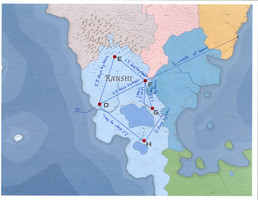
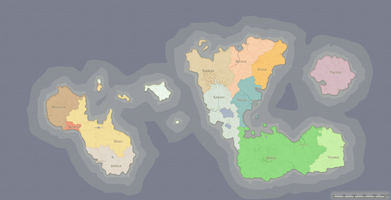
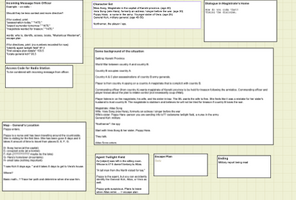
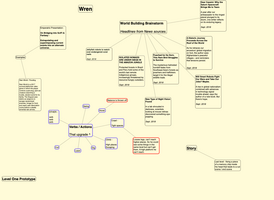
So a lot of progress this week (I think). We made changes to the overall framing of the narrative, have a better idea of the flow between interactions, and made more concrete decisions on character profiles & setting. We met with several professors and got lots of feedback about the progression of the game.
Let me introduce some characters:
- Atlas Song, magistrate in the capital city of Kanshi province.
- Vera Song (née Hara), formerly an actress / singer before the war. Married to Atlas Song.
- Poppy Hara, a nurse in the army. Younger sister of Vera.
These are the main characters of the household the player is spying on. I'm mostly focusing on the Vera & Poppy relationship right now so we can have a new portion of the game fleshed out and hopefully prototyped for the December 13th milestone. (So if you are in NYC you can stop by the NYU Game Center and play everyone's thesis projects that evening.)
I have been reading a lot about writing for games, storytelling tools, and designing within constraints. Here are some blog posts I've referenced for this portion of writing, brainstorming, and design where I include a couple of my thoughts:
- First, this post by Lucas Pope on the Return of the Obra Dinn devlog. More specifically, the portion on story visualization. I've been pretty scattered in general. I work with a lot of different programs (Scapple included) and sometimes it just turns into a mess. Over the last year I used a lot of Google Docs, Yarn, Inform7, and Ink. The challenge for me here: For the first time I am writing predominantly for voice over dialogue that requires players to listen and has minimal text on the screen to reference during gameplay. In my previous games, text plays a larger role. For Operation Kanshi, we want to rely more on audio. Currently I've been using the Beat Board function in Final Draft 10. I don't think I know how to use it efficiently though. I have a (probably blurry) screenshot that is one of the attachments to this post. The Beat Board allows you to make a Beat Title and add other text, but it doesn't really connect them the same way you can in Scrapple. With the Beat Board I just feel like I am randomly selecting a spot to drop some text in a box. And while Scrapple does allow you to connect between boxes, it doesn't allow you to connect with arrows that indicate a direction or flow. I kind of made a mess with it in the last iteration of our thesis prior to Operation Kanshi— the now defunct project Wren (which is also attached as a probably blurry screenshot). I still don't know what would work best, and with time not on my side I am sticking to the Beat Board and toggling between it and the Script View in Final Draft 10.
- Next, this post by Robert Yang on video game dialogue. Yang references a game writing talk by Jon Ingold and talks about poorly written game dialogue. Yang writes: "To me, this is the fundamental problem of writing for games: gamers have been trained specifically to ignore subtext" (his emphasis, not mine). To be honest, I'm pretty torn as a writer with a background in poetry where I prefer to be more cryptic, subtle, or implicit in my work. (I gave a postmortem talk about this struggle for a previous project where I was the narrative designer.) I guess this is where audience matters and where we need to make a decision on what Operation Kanshi is or isn't. At the moment we envision Operation Kanshi with tight, concise writing that drops details in a nuanced conversation and demands that the player pay attention to subtext, but doesn't punish the player or fail them. There are simply different outcomes. And by this I am thinking about Naomi Clark's Consentacle: "So who won? Nobody—sex is only a competition if you want it to be! To find out how the encounter was, the Consentacle rules have a chart to consult for an evaluation of your intimate encounter." With this in mind, I don't want to patronize the player with overtly blunt, repetitive dialogue that tries to reinforce some kind of mission or quest. This isn't an epic 100+ open world game. So with this in mind, I need to draft, revise, & playtest the dialogue in con junction with Amanda's art knowing we have scoped the narrative to take place in a single day with several specific objectives for the player.
Last part of this post: Amanda found this really cool map generator called Fantasy Map Generator. It is nifty and we went ahead with one of the generated maps to start thinking about how space & geography relates to the plot. The characters are all in an unseen house since the game takes place at the spy's desk. And since we can only hear their conversation, the player can only infer so much about the world, geography, and objectives of the game. Somehow having this generated map made some narrative decisions a million times easier to make. So I'll end this post with these screenshots. And also a link to this Fantasy Name Generator as well.

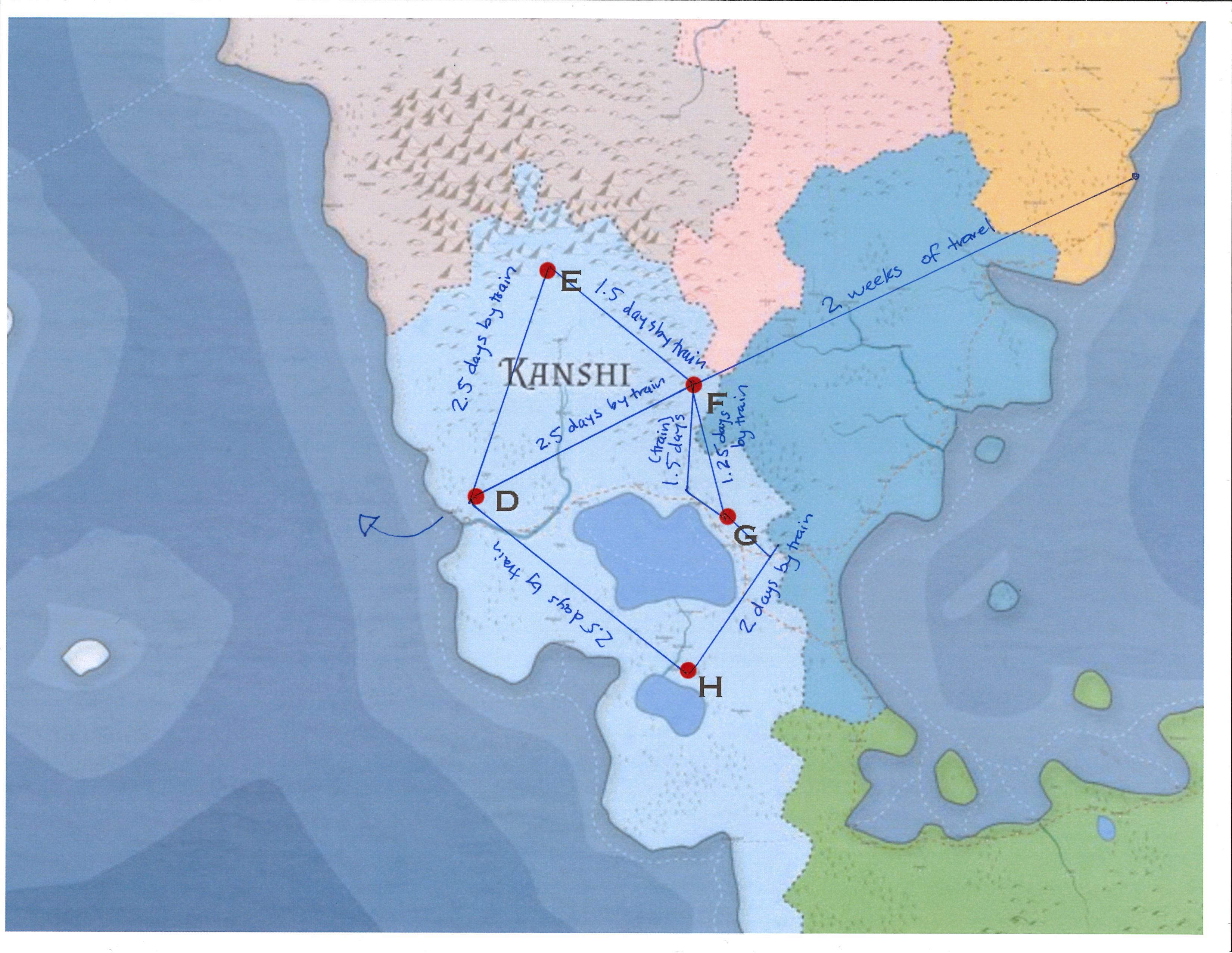
Get Operation Kanshi
Operation Kanshi
Effective 1NOV49 you are assigned to OPKAN 49.
| Status | In development |
| Authors | Emperatriz Ung, Amanda E. Siswojo |
| Tags | 2D, asian-diaspora, civil-war, espionage, Narrative, nyu-game-center, radio, story-driven |
| Languages | English |
More posts
- [13] A couple bug fixes, music, & pause menuMay 22, 2019
- [12] Operation Kanshi - Trailer & Upcoming Showcase!May 17, 2019
- [11] May 2019 Prototype available! + UpdatesMay 10, 2019
- [10] Playtester feedback - March 2019 Edition!Apr 04, 2019
- [09] References / InspirationMar 15, 2019
- [08] March 2019 PrototypeMar 14, 2019
- [07] December 2018 PrototypeJan 03, 2019
- [06] Playtester feedback from December 2018Jan 03, 2019
- [05] On voice oversDec 30, 2018

Leave a comment
Log in with itch.io to leave a comment.